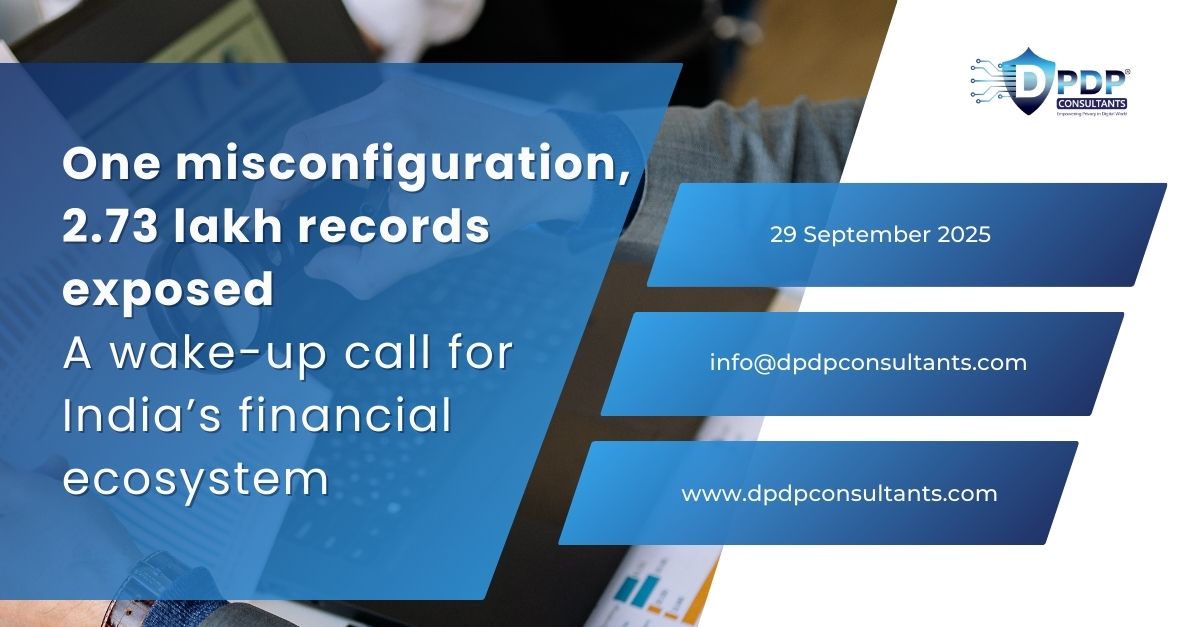Imagine a folder in the cloud that anyone with the link can
open, and inside are hundreds of thousands of completed bank transfer forms:
account numbers, transaction amounts, names, phone numbers and email addresses.
That’s exactly what security researchers found when they discovered an
unsecured Amazon-hosted storage bucket containing roughly 2.73 lakh
individual transaction files formatted for India’s National Automated Clearing
House (NACH).
An investigation by cybersecurity firm UpGuard uncovered the exposed server on August
26; their sample analysis showed many files contained unredacted account
numbers and contact details. The exposed dataset spanned 38 banks and
non-bank lenders, and one small NBFC — Aye Finance — accounted for nearly 60%
of the records in the sample. UpGuard notified affected parties and escalated
the matter to NPCI and India’s CERT-In; the exposed bucket was reported secured
in early September.
The leak was not from NPCI’s systems, the authority clarified after a review,
but the dataset contained documents formatted to NACH requirements and listed
many lenders and originators. UpGuard’s sample placed Aye Finance at the
largest share of exposed documents; other lenders named in public reporting
include State Bank of India, Muthoot Capital, Bank of Baroda and Punjab
National Bank. Public statements so far have focused on a likely vendor or
integration misconfiguration along the NACH chain rather than a direct
breach of a single large bank’s core systems.
Two facts raise the stakes beyond the raw numbers. First, these were not hashed
or redacted PDFs — they were completed forms with live account numbers and
contact details, which materially increases fraud and social-engineering
risk for affected individuals. Second, the exposure highlights supply-chain
risk: systems that sit between banks, NPCI and originators (vendors,
integrators, cloud managers) can introduce vulnerabilities that affect dozens
of institutions at once. That makes incident response and attribution messy,
and it slows remediation — which is exactly what the UpGuard timeline showed.
A short timeline:
- Discovery
by UpGuard: Aug 26 (researchers downloaded a 55,000-file sample for
analysis).
- Notification
to an affected NBFC: Aug 27–28.
- Escalation
to NPCI: Aug 29; contact with CERT-In followed.
- Bucket
secured: early September.
This sequence illustrates a common pattern: discovery by third-party
researchers, attempts to notify multiple stakeholders, then a delayed but
decisive containment step.
What organisations should do right now:
- Treat
vendor integrations as first-class risks. Contracts, inventories and
technical audits must cover cloud storage configurations and access
control for every integration partner.
- Harden
cloud storage immediately. For Amazon S3 (and equivalent object
stores) enable Block Public Access, enforce TLS-only uploads/downloads,
use server-side encryption, and run S3 Access Analyzer / similar tools to
detect overly permissive policies.
- Enforce
least-privilege IAM and rotate temporary credentials. Remove wildcard
policies and periodically review roles used by vendors and
automation.
- Log,
monitor and retain evidence. Maintain audit trails and alerts so an
exposed bucket is detected quickly; follow CERT-In guidance on incident
response and reporting timelines.
- Plan
clear customer communications and remediation. If personal data is
exposed, prepare timely notifications, support for fraud monitoring, and a
transparent incident disclosure.
- Assume
the supply chain can be the weakest link. Regular penetration testing,
vendor risk scoring, and contractual SLAs for misconfiguration and
incident notification reduce the chance of a repeat.
What this means for payments built on NACH
NACH enables mass recurring payments and mandates — its utility is why large
volumes of sensitive forms exist. But mass-processing systems demand mass
attention to data governance: data minimisation (store only what’s needed),
tokenisation where possible, and encryption-at-rest plus strict access
controls. Until those protections are standard across originators, banks and
integrators, incidents like this will continue to create outsized ripple
effects.
This breach is not just an IT problem — it’s a governance, vendor-management
and customer-trust challenge. The specifics (2.73 lakh files; unredacted
account details; multiple lenders implicated) make it a high-visibility example
of why organisations must move beyond box-checking security and build
continuous, supply-chain aware cyber hygiene into payments infrastructure.
Stay with us for updates on: DPDP
Consultants Newsletter





